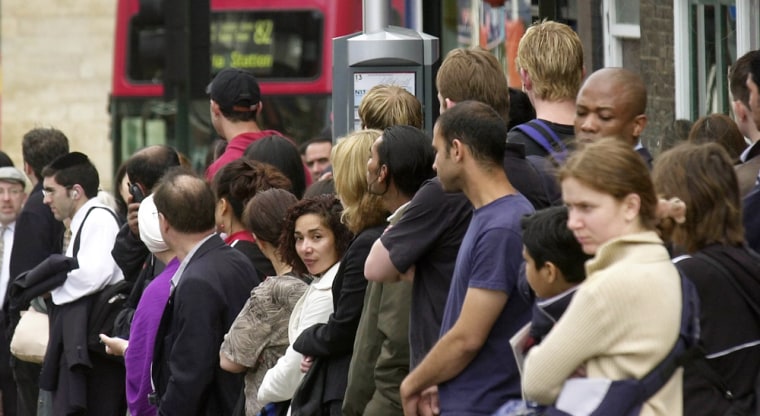Commuters walked, biked, packed into overcrowded buses and crawled along in heavy traffic jams as a 24-hour subway drivers’ strike made a mess of London’s rush hour Wednesday morning.
A small number of trains on a few subway lines remained in service, but the vast majority of the massive network was at a standstill, leaving the roughly 3 million people who use the system every day to scramble for alternative ways of getting around.
Traffic was bumper to bumper in the capital and overland train stations were jammed with people. Buses were so crowded they passed by stop after stop without letting anyone on.
“I am feeling bleary eyed,” sad Helen Griffiths, who left home in north London an hour earlier than normal to get a bus to work and said she would probably walk home. “I feel sorry for the poor people standing at the stops and the bus just sailing past.”
The Automobile Association said the rush on the roads started an hour earlier than normal and that many people who live outside London had driven into the city. The group predicted a prolonged evening rush hour.
Some work from home
Many commuters decided to work from home or take the day off, or concluded they’d be best off getting to the office under their own power, by foot or bicycle. Sidewalks were packed with pedestrians.
Outside King’s Cross train and Underground station in north London, hundreds of people waited at bus stops or set off to walk to work, clutching maps handed out by subway staff.
Some didn’t mind the chance for a little exercise.
“It’s not too bad, actually,” said Richard Page, 22, heading for London’s financial district a couple of miles from King’s Cross. “It’s only a 45-minute walk. I’m from the country, so that’s an acceptable distance to walk for me.”
Even though he had relatives working for the Tube, as it is known, Page said he didn’t approve of the strike.
“There has to be a better way to sort it out,” he said.
London Underground managers and the Rail Maritime and Transport Union were at odds over a pay proposal that would give the workers a two-year raise worth 6.75 percent.
The union has complained about conditions attached to the deal, including the modernization of technology that could cost some jobs.
Management has called the strike “completely unnecessary” and said it would create a hardship for millions of Londoners.
Mayor walks to work
Mayor Ken Livingstone, who walked to work instead of taking the subway as usual, has criticized some of the workers for requesting a four-day week, saying that would force already expensive fares even higher.
He said the proposed pay deal, which cuts workers’ hours to 35 per week, was “incredibly generous.”
“If the answer to this question is a strike, I think perhaps the union is asking the wrong question,” Livingstone told British Broadcasting Corp. radio.
The 24-hour strike began at 6:30 p.m. local Tuesday but London Underground said it did not expect service to be running smoothly again until Thursday, meaning three rush hours would be disrupted.
